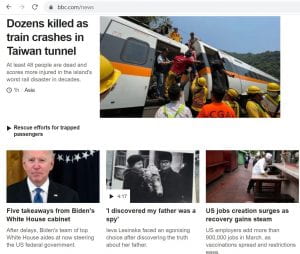What is the theory of small teaching?
The theory of ‘small teaching’ comes to us from James Lang (2016). He asserts that small teaching is the minor changes to course design, assessment structure, or communication with students that impact student engagement, motivation, and achievement. His book Small Teaching: Everyday Lessons from the Science of Learning organizes these small teaching techniques into three categories – knowledge, understanding, and inspiration. We can also look at the small changes as techniques that can be implemented into individual class sessions at the beginning (in the first fifteen minutes), in the middle, or at the end (in the last fifteen minutes). This series of posts will share small teaching techniques to implement in these sections of a course session – the beginning, middle, and end. Below we will discuss different warm up techniques to use in the first fifteen minutes of a class session.
The First Fifteen Minutes
Imagine the first minutes of class from the student perspective. They are logging on or shuffling into seats. They are finding something to write with and opening their notebooks or laptops. Most are likely tucking devices away after scrolling through social media or reading a news headline. In those first minutes of class, students’ minds are elsewhere. As the instructor, we must strive to find a way to capture the students’ attention in order to transition them from these thoughts about their own worlds and into thinking about the course. There are several ways to help focus students on the material at the beginning of class. They include sharing:
– An interesting photo or video
– A headline
– A powerful quote/paragraph
– An anecdote
Each of these examples can be used to review material from the previous class session, preview information in the current class session, or help students to transfer their learning by helping them to make connections between course material and the outside world. These warm up activities can serve as important connectors between class sessions so that each session’s content is linked to the session before and after. In just fifteen minutes, you can not only re-engage the students’ minds but also use this critical time to enhance their recall of previous material, begin thinking about the upcoming session material, or see how the course relates to the broader world. Below are examples of each type of technique listed above.
An interesting photo or video
There are many ways to use photos or video in the first fifteen minutes of class. To implement this method, add the photo or video to existing presentations or create a master presentation with each class session’s warm up in chronological order. An ornithology professor might show the live feed of an eagle camera throughout the spring semester to show the nesting pair and their behavior. A political science professor might use political cartoons at the beginning of class to showcase a course concept. An art teacher might show a virtual museum tour, like this one of the Louvre, for the first few minutes of class.
A headline
With the 24-7 news cycle, there are many headlines available to us each day that can be related to course content. You can either scan news sites specifically to find a relevant headline or use this technique when you see a headline that immediately reminds you of the course. An ecology professor might share a headline related to changes in the environment. A finance professor might share a headline related to forecasts of a recession. Faculty can save the headline by showing a screen capture of the website or taking a picture of the headline if in print.

A powerful quote/paragraph
If you have assigned a reading for the day’s class session, consider projecting a powerful quote or paragraph from the reading. This will allow students to recall the reading and find any notes they may have taken around that passage. English professors can use this technique to point out key themes from the text that will be discussed. The quote shown to students could also be a general quote found online. A nutrition faculty might show a powerful quote related to motivation to help students start thinking about the session’s topic.
An anecdote
Last but not least, faculty can share a short anecdote or story from their life in the first fifteen minutes of class. Using an anecdote helps to humanize both you as the instructor and the material because students can see how it relates to someone else’s life. As stated by Horton (2012) anecdotes “make information real and personal” (p. 106). A faculty might share a story about receiving feedback on their first paper right before returning grades on a class assignment. A nursing instructor might share a memory about a patient they helped. These stories can serve as short yet powerful teaching moments to engage students at the beginning of class. The general guidance for including storytelling is to help students see how the material can be applied to their lives. Below you will hear a sample anecdote from Horton’s book E-Learning by Design.
An interesting photo, a headline, a quote, or an anecdote – these are just four ways to consider starting a class session. Remember when using any of these types of warm-up activities, they should relate to course content, whether as a review of material previously presented, as a preview of content that will soon be presented, or as a way to transfer student learning by demonstrating the connection between course material and the outside world. These activities can also be assessed or non-assessed.
To assess or not assess?
There are several benefits to collecting some type of student response to these small teaching activities used during the first fifteen minutes, whether they are graded or not. Using the chat feature in Zoom or a platform like Top Hat to collect student responses to a question related to the warm-up activity can serve as an attendance tracker. If you plan to use a warm-up activity for each class session, you can also ask students to submit bi-weekly summaries of the warm ups. These can be short written activities that ask the students to share the most memorable warm up from the two-week period or describe how two or more of the warm ups related to their own lives. These can be assessed using a rubric or as a completed/not completed assignment.
This post presented ideas to implement a small teaching technique into the first fifteen minutes of class. The next post will include ideas for the middle of class. If you would like to discuss ways to incorporate these ideas into your teaching, make an appointment with an Instructional Designer in the Center for Teaching and eLearning.
Looking for more information?
If you would like to learn more about Lang’s concept of small teaching, there are several resources available. Consider requesting his book Small Teaching: Everyday Lessons from the Science of Learning from the library. He also visited University Park in January 2020. The recordings of his presentations are available on the MediaSite Library.
Presentation 1: Small Teaching: From Minor Changes to Major Learning
Presentation 2: Teaching Distracted Minds
Instructional Designer, Dani McCauley, also presented a one hour webinar on small teaching techniques which was hosted by the Schreyer Institute of Teaching Excellence.
References:
Horton, W. K. (2012). E-learning by design. Pfeiffer.
Lang, J.M. (2015, November 15). Small changes in teaching: The minutes before class. The Chronicle of Higher Education. Retrieved February 11, 2021, from https://www.chronicle.com/article/small-changes-in-teaching-the-minutes-before-class/
Lang, J. M. (2016). Small teaching: Everyday lessons from the science of learning. Jossey-Bass.
Lang, J. (2020). Small teaching: From minor changes to major learning [Video]. https://live.libraries.psu.edu/Mediasite/Play/f169bddf458a455cae07850b5c8e14b21d?catalog=8376d4b24dd1457ea3bfe4cf9163feda21
Lang, J. (2020). Teaching distracted minds [Video]. https://live.libraries.psu.edu/Mediasite/Play/77c23163c9a24f31851fb4c0e74604341d?catalog=8376d4b24dd1457ea3bfe4cf9163feda21




